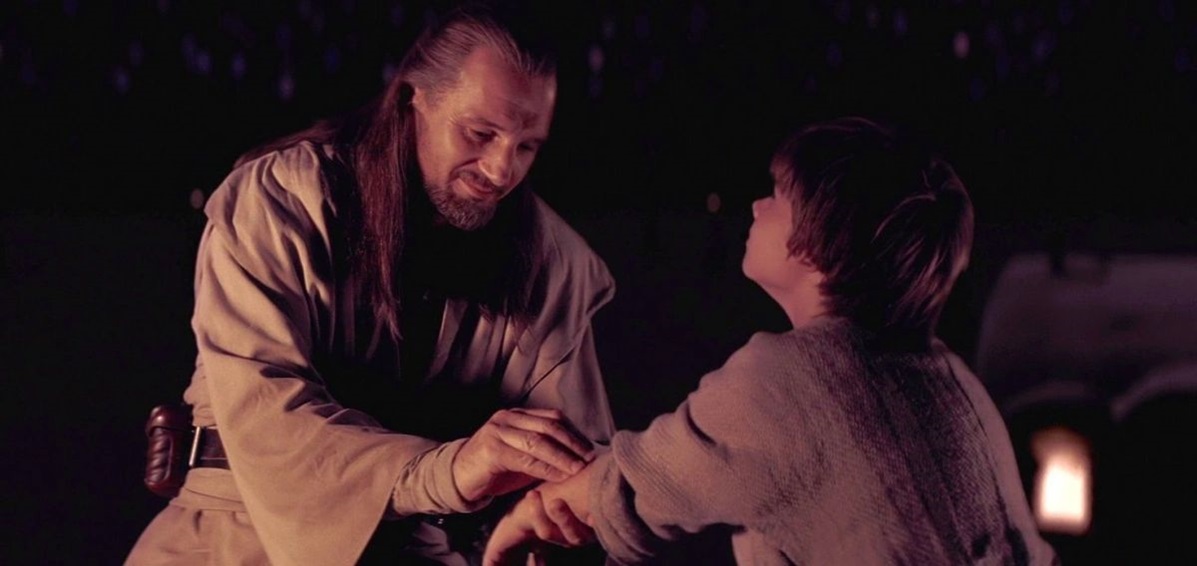
In case you haven’t heard, there’s a new Star Wars movie coming out later this week. It is easily the most highly anticipated movie in the past fifteen years. In fact, the last time I remember the general moviegoing public being amped like this for a movie was Episode I: The Phantom Menace, which was released in 1999. That comparison may well frighten some of my readers. Despite (or, more likely, because of) the enthusiasm, reviews for Episode I were, and remain, famously lukewarm. Everyone remembers that Jar Jar Binks was a lightning rod for criticism, but I recall that an equal number of people complained about the introduction of “midi-chlorians” to the Star Wars universe. As the Jedi master Qui-Gon Jinn explained to young Anakin Skywalker (and to audiences), midi-chlorians were microscopic life forms that resided within the cells of all living things. He further explained that, “without the midi-chlorians, life could not exist, and we would have no knowledge of the Force. They continually speak to you, telling you the will of the Force.” In fact, one’s sensitivity to “the Force” was wholly dependent on the number of midi-chlorians within one’s cells. I think it’s fair to say that a majority of Star Wars fans hated the idea from the start. Most complained that providing the Force with a scientific explanation robbed the Force of its mystery, its romance, and its profundity. Midi-chlorians were rarely mentioned in the subsequent prequels, and J.J. Abrams has promised that they will not appear in Episode VII: The Force Awakens.
I may be one of the only people on Earth who can say this, but I will genuinely miss the midi-chlorians. After all, they are based on one of the most beautiful theories in the entire history of science. As director George Lucas has explained in various interviews, he based the idea of midi-chlorians on Lynn Margulis‘s theory of endosymbiosis, which holds that sub-cellular organelles like mitichondria and chloroplasts were once independent, free-living organisms who merged with nucleated cells at some point in the remote history of life on Earth. (MITIchondia + CHLORoplasts = midi-chlorians.) Others had proffered similar ideas in the early twentieth century (examples here, here, and here), but their ideas were almost uniformly dismissed. Margulis was the first person to convince the scientific community that endosymbiosis was actually true. She too encountered ridicule when she first introduced the idea in 1967, but she spent the rest of her illustrious career proving the theory correct. Among the earliest to grasp the theory’s mind-bending implications was the great physician Lewis Thomas, who described the theory in his award-winning classic, The Lives of a Cell: Notes of a Biology Watcher (1974). In the passage below (which I lifted from a chapter titled “Organelles as Organisms”), Thomas waxes philosophical about the fact that mitichondria not only inhabit the cells of all humans, but the cells of all organisms, as well. He was easily one of the best science writers of the twentieth century, and, when you read a passage like this one, you start to understand why Lucas wanted to associate the idea with “the Force.” You may even find yourself missing midi-chlorians:
“There they [mitichondria] are, moving about in my cytoplasm, breathing for my own flesh but strangers. They are much less closely related to me than to the free-living bacteria out there under the hill. They feel like strangers, but the thought comes that the same creatures, precisely the same, are out there in the cells of sea gulls, and whales, and dune grass, and seaweed, and hermit crabs, and further inland in the leaves of the beech in my backyard, and in the family of skunks beneath the back fence, and even in that fly on the window. Through them, I am connected; I have close relatives, once removed, all over the place. This a new kind of information, for me, and I regret somewhat that I cannot be in closer touch with my mitochondria. If I concentrate, I can imagine that I feel them; they do not quite squirm, but there is, from time to time, a kind of tingle. I cannot help thinking that if only I knew more about them, and how they maintain our synchrony, I would have a new way to explain music to myself.”
~ Lewis Thomas, The Lives of a Cell: Notes of a Biology Watcher (Viking Press, 1974), pp. 86-87.